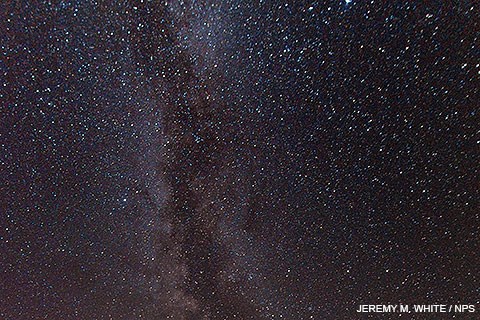
Pollution of dark night skies with artificial light is a problem in much of the world. We have only begun to explore its ecological effects, such as impacts on migrating birds, turtles, and other species, as well as possible impacts on predator processes and plant dynamics whose phenology depends on day length. National parks represent some of the last opportunities to protect nighttime darkness. We can often identify specific sources of light pollution outside of park boundaries, and work with our neighbors to modify them. We also need to identify sources of light pollution generated by the National Park Service within parks and take steps to ensure that our lighting systems in parking lots, maintenance yards, and other facilities are properly designed. California's first Dark Sky Reserve?In 2021, Point Reyes National Seashore—collaborating with the Point Reyes Station Village Association, Marin County Supervisor Dennis Rodoni, and the communities surrounding the park—began the effort to become an International Dark Sky Reserve. Learn more at Dark Sky West Marin. MediaPoint Reyes Residents Push for Darker Skies. KQED's Forum. September 14, 2023. Learn more about the night sky at national parks.
Marech, R. 2023. Reaching for the Sky. National Parks 97(2): 30–38. Available at https://www.npca.org/articles/3405-reaching-for-the-sky (accessed 6 April 2023). Adobe® Acrobat Reader® may be needed to view PDF documents. Learn More about the Importance of Dark Night SkiesScience & Research Project SummariesFrom 2006 to 2018, Point Reyes National Seashore and Pacific Coast Science and Learning Center (PCSLC) staff and communication interns assisted scientists conducting research through the PCSLC and the San Francisco Bay Area Inventory & Monitoring Network to produce a series of Resource Project Summaries, one of which was about the night sky and lightscapes at Point Reyes. These one- to eight-page summaries provide information about the questions that the researchers hoped to answer, details about the project and methods, and the results of the research projects in a way that is easy to understand.
|
Last updated: October 24, 2024
